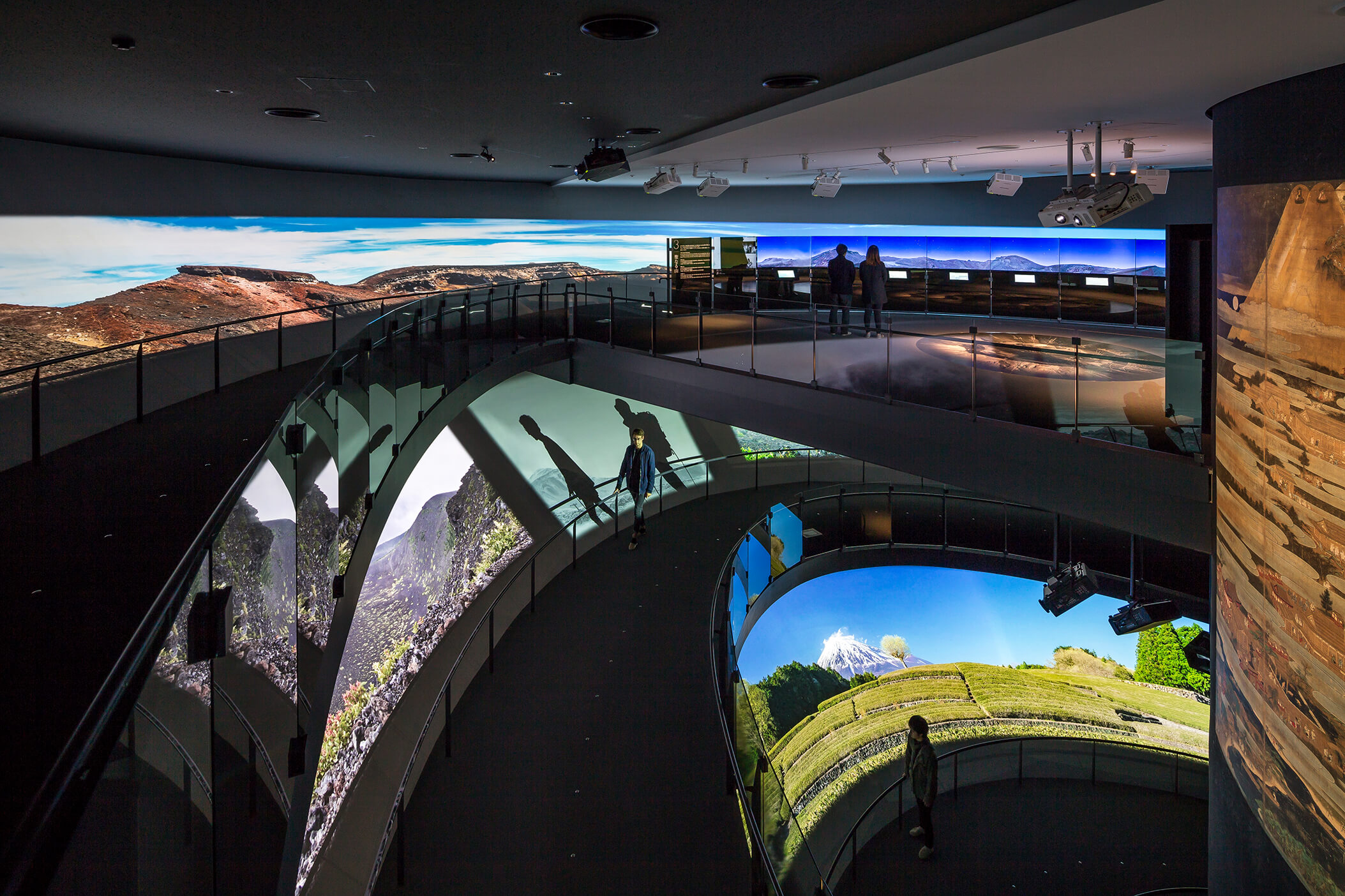Visitors to the new Mount Fuji museum follow a spiral path up through the exhibits, evoking thoughts and feelings of climbing the actual mountain.
ESI Design was proud to serve as an exhibit design consultant to the Fujisan World Heritage Center, commissioned by Shizuoka Prefecture to celebrate Mount Fuji’s relatively recent status as a UNESCO world cultural heritage site. We advised the design team on fitting the exhibit design into the building design to create a cohesive and seamless visitor experience.
According to UNESCO, Mount Fuji has "inspired artists and poets and been the object of pilgrimage for centuries." The new museum, designed by architect Shigeru Ban and located about 85 miles southwest of Tokyo, offers an unimpeded view of Mount Fuji, Japan's highest mountain. The building is shaped like an inverted cone, or upside-down mountain. A reflecting pool in front shows the cone right side up, evoking Mount Fuji's famously symmetrical, mythical peak.
The main exhibition hall occupies the entire cone, a cavernous, semi-dark space. Visitors follow a spiral path up through the building, evoking the experience of climbing the mountain. The exhibit features videos depicting six different scenes from the actual ascent, projected on the cone’s inner wall. At the apex, a grand picture window frames a postcard-perfect view of the majestic Mount Fuji, a symbol of Japan. As Ban told Architectural Record (March 2, 2018), “Normally, buildings have no relationship to their exhibits, but I am very proud of how they harmonize here."
“Normally, buildings have no relationship to their exhibits, but I am very proud of how they harmonize here."

Visitors to the new Mount Fuji museum follow a spiral path up through the exhibits, evoking thoughts and feelings of climbing the actual mountain.
ESI Design was proud to serve as an exhibit design consultant to the Fujisan World Heritage Center, commissioned by Shizuoka Prefecture to celebrate Mount Fuji’s relatively recent status as a UNESCO world cultural heritage site. We advised the design team on fitting the exhibit design into the building design to create a cohesive and seamless visitor experience.
According to UNESCO, Mount Fuji has "inspired artists and poets and been the object of pilgrimage for centuries." The new museum, designed by architect Shigeru Ban and located about 85 miles southwest of Tokyo, offers an unimpeded view of Mount Fuji, Japan's highest mountain. The building is shaped like an inverted cone, or upside-down mountain. A reflecting pool in front shows the cone right side up, evoking Mount Fuji's famously symmetrical, mythical peak.
The main exhibition hall occupies the entire cone, a cavernous, semi-dark space. Visitors follow a spiral path up through the building, evoking the experience of climbing the mountain. The exhibit features videos depicting six different scenes from the actual ascent, projected on the cone’s inner wall. At the apex, a grand picture window frames a postcard-perfect view of the majestic Mount Fuji, a symbol of Japan. As Ban told Architectural Record (March 2, 2018), “Normally, buildings have no relationship to their exhibits, but I am very proud of how they harmonize here."
“Normally, buildings have no relationship to their exhibits, but I am very proud of how they harmonize here."